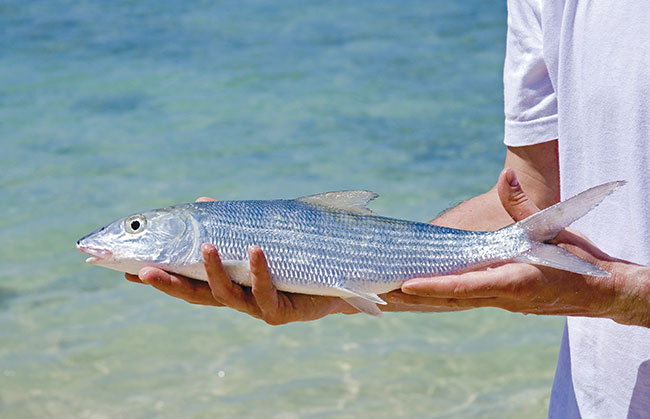
U.S. researchers report advances in bonefish culture
February 11, 2021
By
Liza Mayer
 Bonefish by AdobeStock.jpg: Eating bonefish is difficult because of their many tiny bones so they’re prized by recreational fishers as trophy fish Photo:© Dušan Zidar / Adobe Stock
Bonefish by AdobeStock.jpg: Eating bonefish is difficult because of their many tiny bones so they’re prized by recreational fishers as trophy fish Photo:© Dušan Zidar / Adobe Stock Researchers at Florida Atlantic University’s Harbor Branch Oceanographic Institute have successfully acclimated young, wild bonefish to the tank-based culture environment to the point where they were able to spawn recently.
The achievement is a first in bonefish culture and “could allow for the closure of the life cycle and enhanced study of the fish’s reproductive and developmental biology,” says Dr Paul Wills, research professor and associate director for research who spearheads the aquaculture and stock enhancement program at FAU’s Harbor Branch.
While bonefish (Albula vulpes) is not a popular food fish other than in Hawaii, advances in its culture could benefit aquaculture, says Dr Wills.
“I personally wouldn’t eat them since they are so bony and their value is greater when left in the water to support a catch-and-release sport fishery and the tourism dollars that follow, but this research is important to the industry because bonefish are taxonomically related to eels and have a similar larval life cycle.
“Information that we find will not only help conserve bonefish but may also shed light on culture methods for the Anguilla sp. Eels, reducing collection of their young thus helping to conserve their populations in the wild as well,” he says.
His team has much more to learn and explore, he added, but closing the life cycle for the species is not one of them.
“We won’t be closing the lifecycle in our studies since we are interested in fish that are as close behaviorally and genetically as possible to the wild; ergo, using wild sourced broodfish,” he says.





